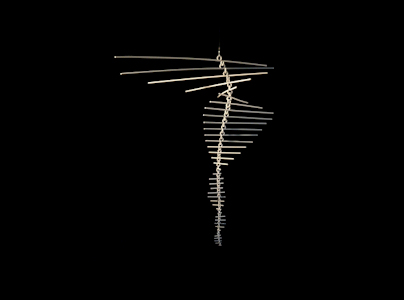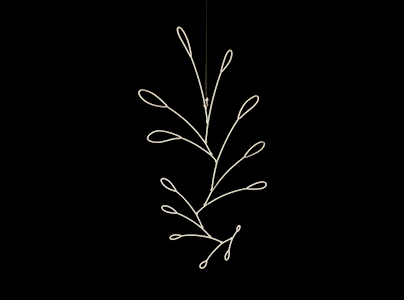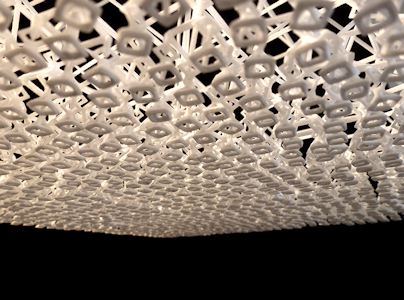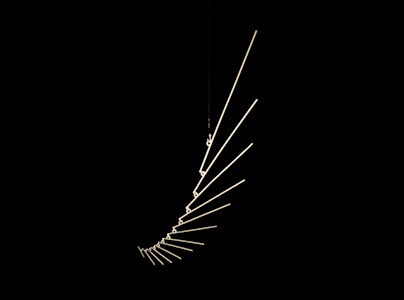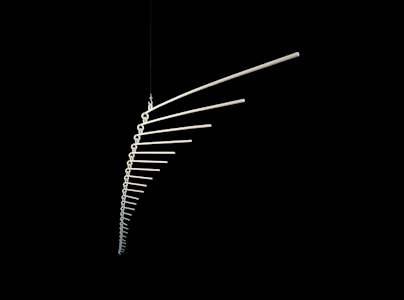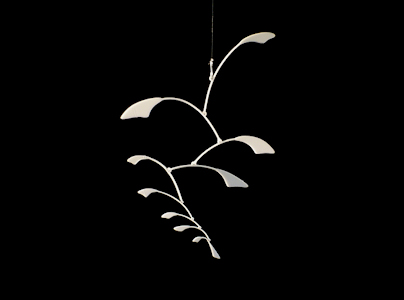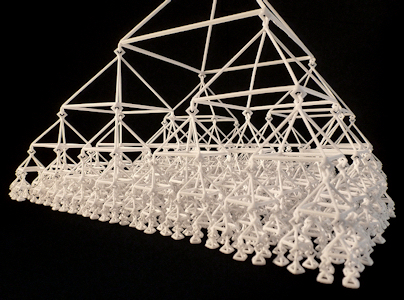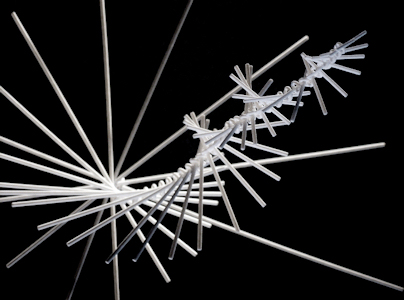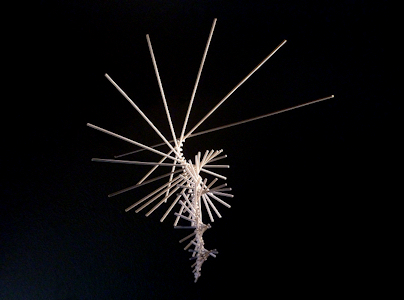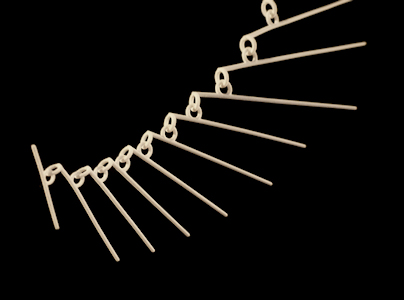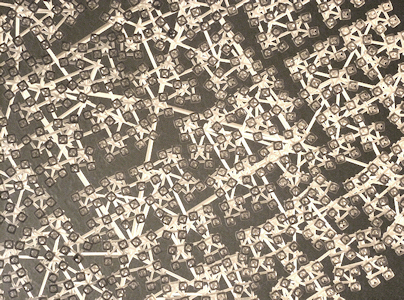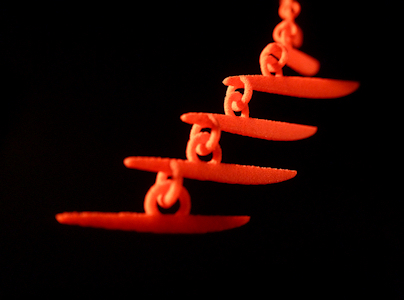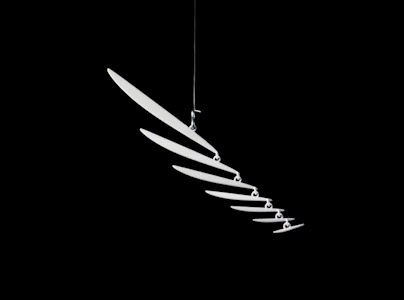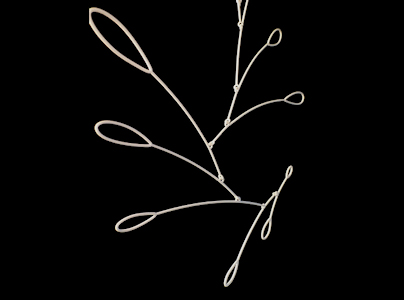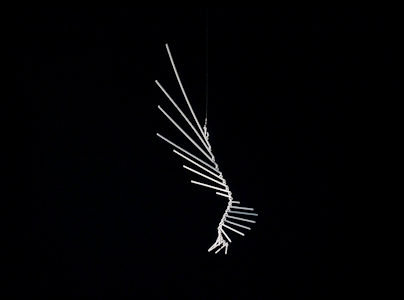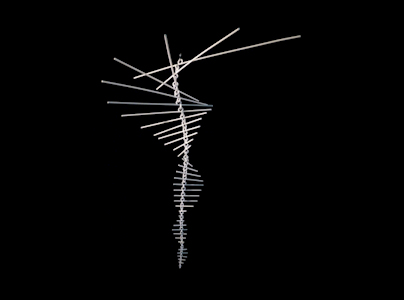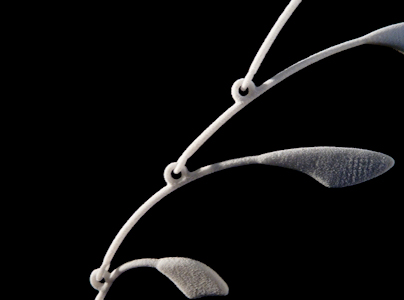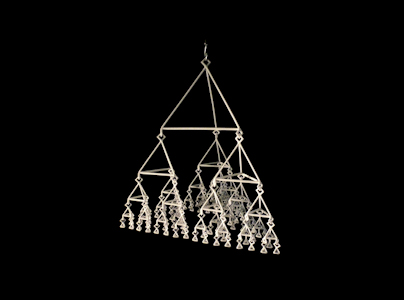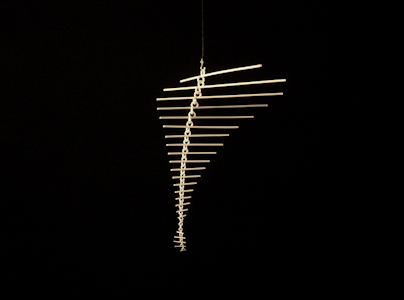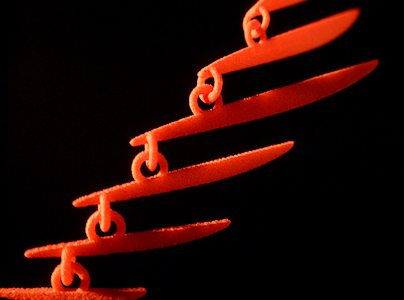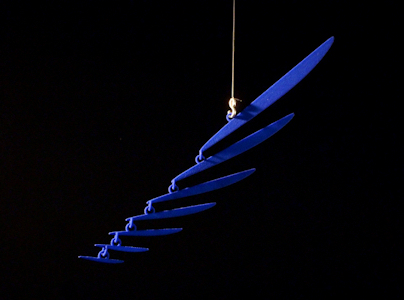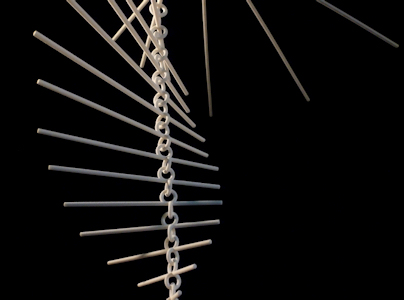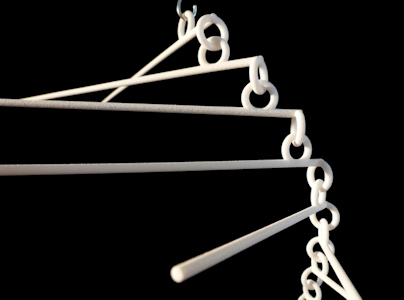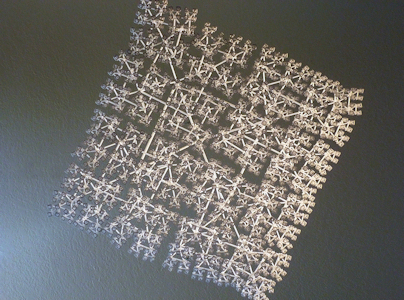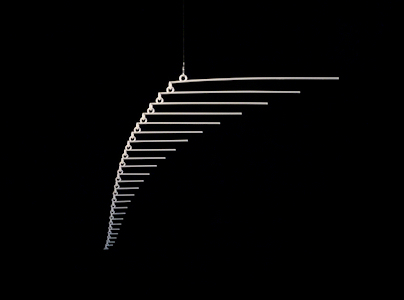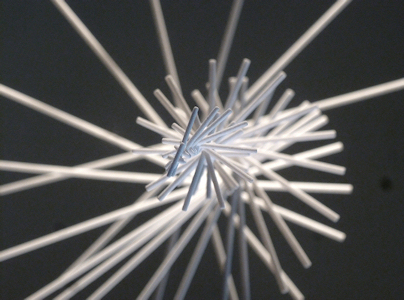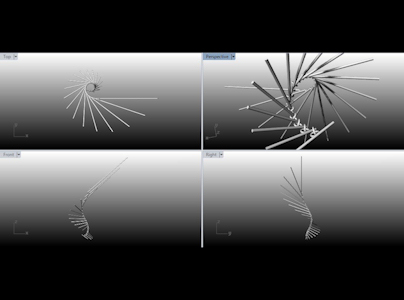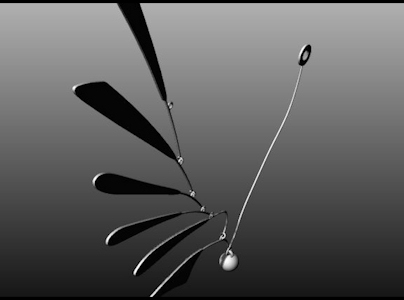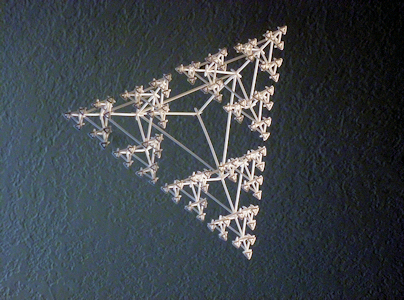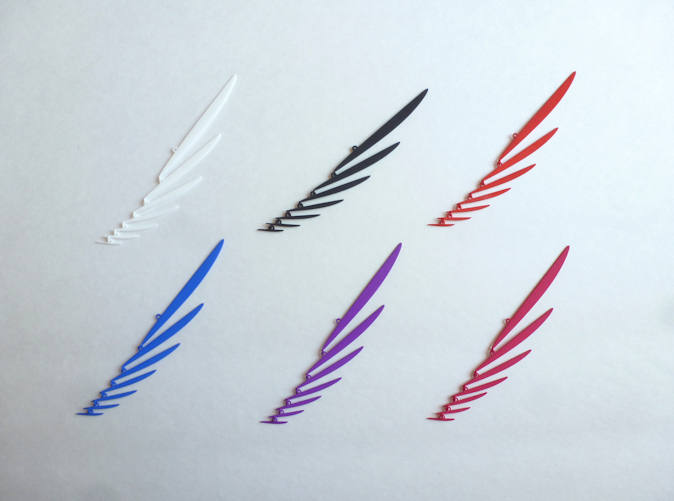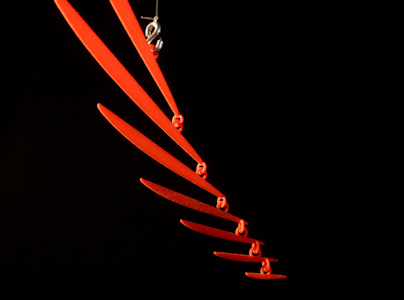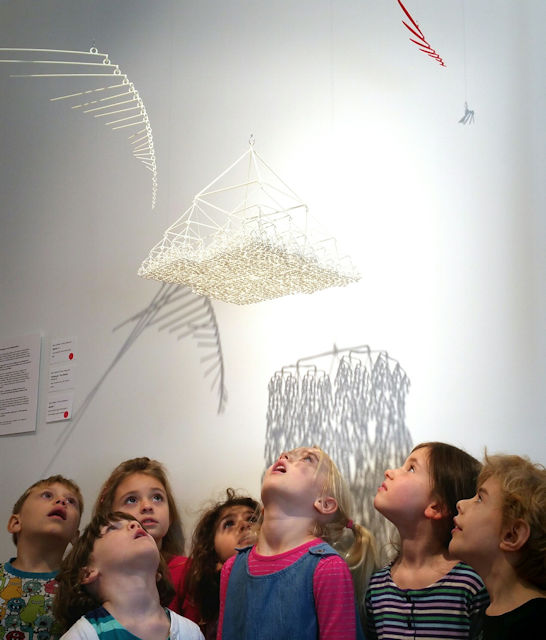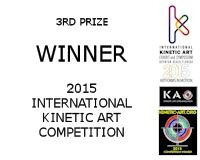3D Printed Mobiles
These 3D printed mobiles are the result of a collaboration between Marco Mahler, a kinetic sculptor specializing in mobiles, and Henry Segerman, assistant professor in the Department of Mathematics at Oklahoma State University.
[Click on images for high-resolution photos]
These mobiles come out of the 3D-printer completely assembled as shown in the photos and video. They are made of separate loose pieces connected to each other. The balance points for these mobiles were calculated to 1/1000th of a millimeter (1/25360th of an inch). The models for some of these mobiles were drawn up “by hand”, others were created utilizing scripts that we wrote. Some of the mobiles, like Mobile 4.2, are designed with a very small increase or decrease in thickness from one part to the next, something that is not possible to do with conventional handmade mobiles. Utilizing scripts also allows for designs that would be very time consuming to make by hand, such as the Quaternary Tree (Level 6), which has 1365 pieces.
We met via Twitter (Marco lived in Portland, Oregon, at the time, Henry in Melbourne, Australia) in early February 2013 when Henry was looking for suggestions for a motor for one of his 3D printed kinetic sculptures. A conversation ensued about the possibilities for making 3D printed mobiles. After about 300 emails, several conversations over Skype, hundreds of lines of code, and a number of test prints and trial-and-error experiments, the result is this collection of mobiles. After an extensive Google search in 2013, it appeared that these are the first fully 3D printed mobiles in the world, and they still appear to be the only fully 3D printed mobiles in the world over 8 years later in 2021.
A video montage:
The material that these sculptures are made of is a laser sintered nylon plastic, one of the most popular materials for 3D-printing. This material is heatproof to 80C/176F degrees. Higher temperatures may significantly change material properties. It is also dishwasher safe (“Yay, finally a mobile we can put in the dishwasher!”).
If you’re not sure what 3D printing is, the Wikipedia page for it explains it rather well. If you’re not sure what a mobile is, see my definition, short history and photos of my handmade mobiles.
We have more ideas for 3D printed mobiles that we’re planning on getting around to. If you’d like to stay updated on any new models that will become available, please enter your email address here:
Please let us know if you have questions or comments.
Thanks for stopping by,
Marco & Henry
___________
These mobiles are also featured in Printing Things – Visions and Essentials for 3D Printing, a new book by publisher and creative agency Gestalten. It’s an inspirational and understandable exploration of the creative potential of 3D printing that introduces outstanding projects, key experts, and the newest technologies.
___________
Also see the New York Times’ article, the Smithsonian’s article and Wired’s article about Henry’s work, the Guardian’s article about Henry’s collaboration with Saul Schleimer, and The New Yorker’s article about the Dice Lab project with Robert Fathauer.

